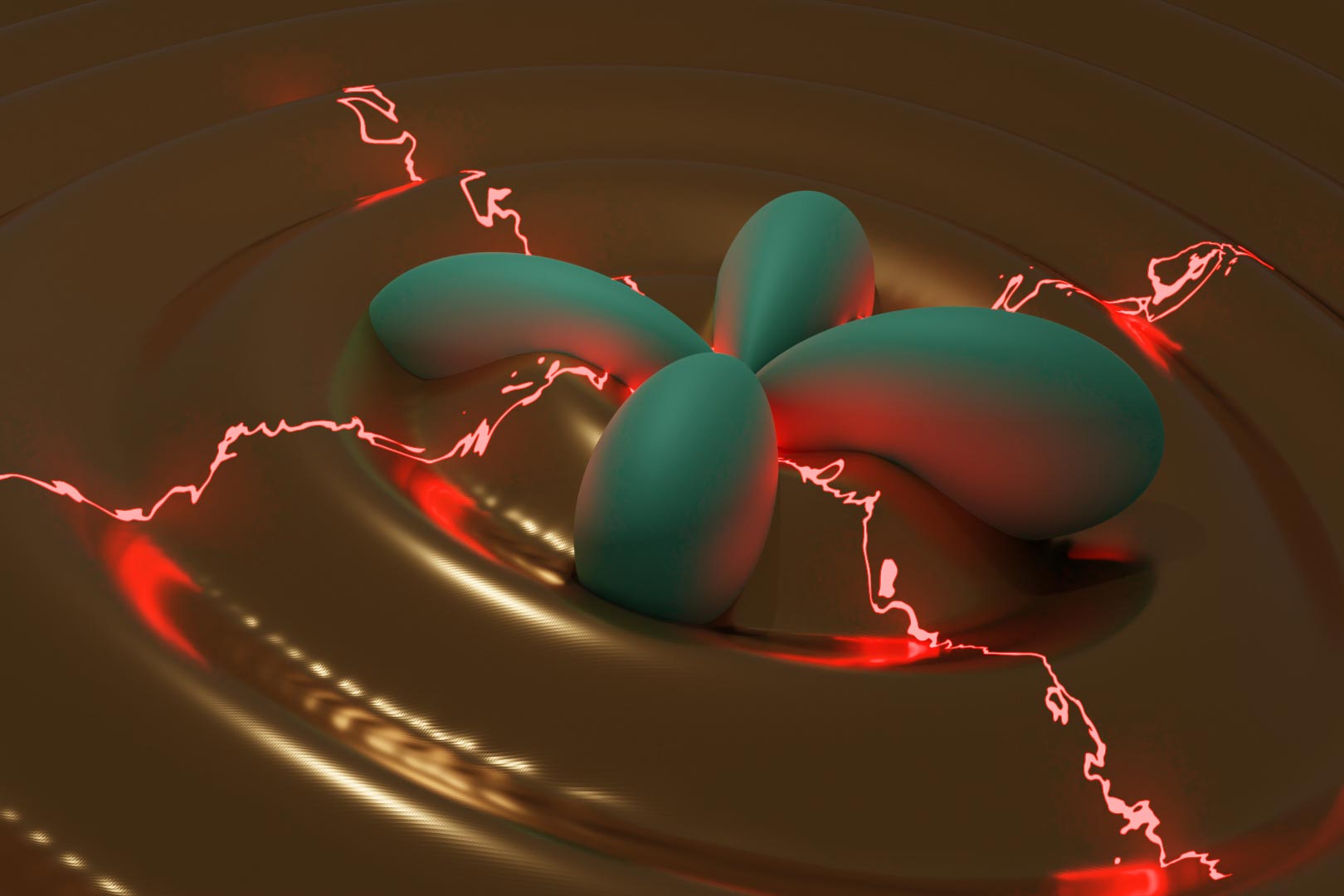
The hybrid particle is a mashup of an electron and a phonon.
Such paired electrons, or Cooper pairs, are a kind of hybrid particle — a composite of two particles that behaves as one, with properties that are greater than the sum of its parts.
Now MIT physicists have detected another kind of hybrid particle in an unusual, two-dimensional magnetic material.They determined that the hybrid particle is a mashup of an electron and a phonon (a quasiparticle that is produced from a material’s vibrating atoms).
When they measured the force between the electron and phonon, they found that the glue, or bond, was 10 times stronger than any other electron-phonon hybrid known to date.
In principle, an electronic excitation, such as voltage or light, applied to the hybrid particle could stimulate the electron as it normally would, and also affect the phonon, which influences a material’s structural or magnetic properties.
The results are especially relevant, as the team identified the hybrid particle in nickel phosphorus trisulfide (NiPS3), a two-dimensional material that has attracted recent interest for its magnetic properties.If these properties could be manipulated, for instance through the newly detected hybrid particles, scientists believe the material could one day be useful as a new kind of magnetic semiconductor, which could be made into smaller, faster, and more energy-efficient electronics.
In 2018, a research group in Korea discovered some unexpected interactions in synthesized sheets of NiPS3, a two-dimensional material that becomes an antiferromagnet at very low temperatures of around 150 kelvins, or -123 degrees Celsius.In probing NiPS3, that group discovered that an exotic excitation became visible when the material is cooled below its antiferromagnetic transition, though the exact nature of the interactions responsible for this was unclear.Gedik and his colleagues wondered if they might detect the hybrid particle, and tease out the two particles making up the whole, by catching their signature motions with a super-fast laser.In this way, they were able to create ultrafast “movies” from which the interactions of different particles within the material could be deduced.
“We found this hybrid particle was only visible below a certain temperature, when magnetism is turned on,” says Ergeçen.To identify the specific constituents of the particle, the team varied the color, or frequency, of the first laser and found that the hybrid particle was visible when the frequency of the reflected light was around a particular type of transition known to happen when an electron moves between two d-orbitals.They also looked at the spacing of the periodic pattern visible within the reflected light spectrum and found it matched the energy of a specific kind of phonon.
This clarified that the hybrid particle consists of excitations of d-orbital electrons and this specific phonon.
They did some further modeling based on their measurements and found the force binding the electron with the phonon is about 10 times stronger than what’s been estimated for other known electron-phonon hybrids.“That way, you could change the properties of a material, like the magnetic state of the system.”.
